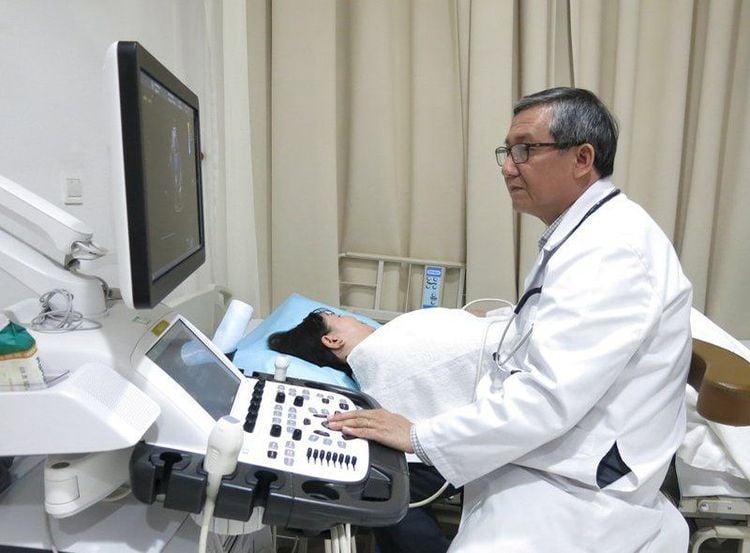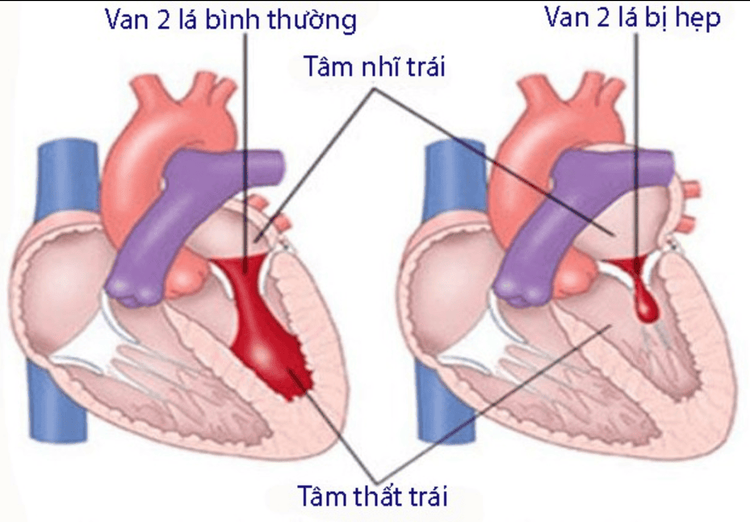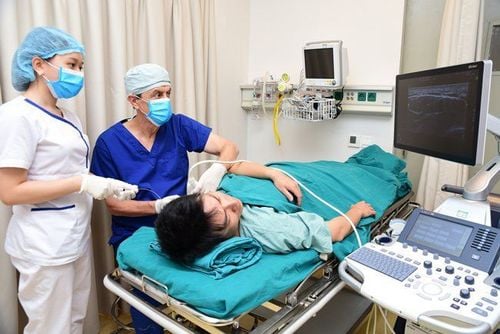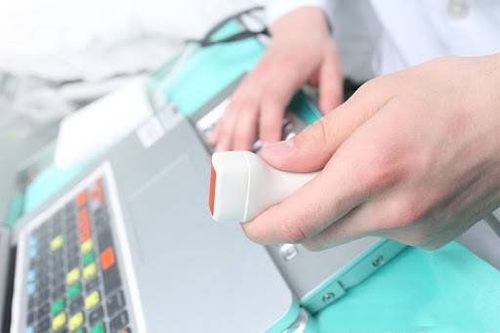This is an automatically translated article.
The article is professionally consulted by Master, Doctor Nguyen Minh Son - Interventional Cardiologist - Department of Medical Examination & Internal Medicine - Vinmec Nha Trang International General HospitalHeart surgery is one of the effective treatments for heart disease. In cardiac surgery, echocardiography plays an extremely important role, affecting surgical indications, surgical techniques, postoperative evaluation, and recovery monitoring.
1. Echocardiography to diagnose heart disease or not?
Patients with suspected signs of cardiovascular disease will be assigned an echocardiogram. Through echocardiography, images of the heart's structure and activity will be reflected through an observation screen. Doctors will rely on specific parameters obtained to determine whether you have cardiovascular diseases or not.
2. Echocardiography to indicate cardiac surgery
2.1. The role of echocardiography in indications for surgery for mitral valve disease Echocardiography helps accurately diagnose the disease, assess the severity of the disease, specifically:
Identify patients with valve regurgitation, stenosis or stenosis - Heart valve regurgitation Describe the lesions Determine the degree of valve stenosis through valve area and pressure difference across the valve Determine the degree of valve regurgitation and valve regurgitation through valve area, opening flow height compared to the left atrium

Siêu âm tim giúp chẩn đoán và đánh giá chính xác tình trạng bệnh
Echocardiography helps determine the extent of the disease and prognosis, including:
Degree of left ventricular dilatation Left ventricular contractile function Degree of right ventricular dilatation Pulmonary artery pressure Echocardiography helps assess damage to the heart. lung. For example, tricuspid valve disease, pericardial effusion, atrial thrombosis - left atrial appendage...
2.2. The role of echocardiography in surgical indications for aortic valve disease Echocardiography helps to accurately diagnose the disease
Identify patients with valve regurgitation, stenosis or stenosis - regurgitation Describe the lesions Determine the extent valve stenosis through the valve opening amplitude, the pressure difference across the valve during systole Determine the valve regurgitation mechanism and the degree of valve regurgitation through the open flow diameter or left ventricular outlet diameter and the open flow height or longitudinal axis Echocardiogram helps determine the extent of the disease and prognosis, including:
Degree of left ventricular dilatation Degree of left ventricular thickness Left ventricular contractile function Right ventricular dilatation, tricuspid regurgitation, hypertension Pulmonary artery force Echocardiogram helps to evaluate combined lesions, especially mitral valve disease, to differentiate functional damage from low-grade organic damage.

Siêu âm tim giúp đánh giá hiệu quả tình trạng bệnh van 2 lá
2.3. The role of echocardiography in surgical indications for tricuspid valve disease Echocardiography helps to accurately diagnose the disease: Determine whether the patient has valve regurgitation or stenosis - valve regurgitation. Physical damage or physical damage due to rheumatism, manifestation and degree of stenosis Echocardiography helps to determine the extent and prognosis of the disease
3. Echocardiography to guide surgery
Echocardiography helps to indicate surgery, gives an accurate diagnosis of pathology, severity of disease and prognosis. However, depending on the specific case, each specific patient has different treatment techniques. Therefore, doctors still need to use echocardiography, focusing on certain techniques to guide surgery and select appropriate treatment methods.
3.1. Echocardiography to guide surgery for mitral valve disease Echocardiography determines the size of the left atrium to help the doctor choose the appropriate left atrial opening, approach the mitral valve Left atrial thrombosis helps the doctor predict The surgery takes a long time and determines the difficulty of the surgery. Ultrasound helps to accurately describe the damage of each part of the mitral valve to help the doctor choose the appropriate surgical method: Replace the heart valve or create a new one. valve shape, choosing appropriate surgical technique and appropriate surgical equipment Ultrasound to determine whether aortic regurgitation is associated with or not to predict whether aortic valve intervention is needed or not

Tùy từng trường hợp bệnh nhân cụ thể bác sĩ sẽ có kỹ thuật xử lý bệnh khác nhau
3.2. Echocardiography to guide surgery in aortic valve disease Ultrasound determines the size of the annulus to predict the small number of prosthetic valves, and estimates the technique of expanding the annulus to obtain a larger number of artificial valves. Ultrasound to determine the valve leaflet thickness in patients with indications for valve shaping to determine the valve shaping technique 3.3. Echocardiography to guide surgery for tricuspid valve disease Echocardiography helps to accurately identify functional regurgitation or rheumatic valve damage to choose the appropriate valve repair method.
In summary, echocardiography has a very important role in cardiac surgery, helping to diagnose diseases, indicate surgery and guide heart surgery. The accuracy of echocardiography depends not only on the knowledge and experience of the doctor, but also largely on the quality of the ultrasound machine. Therefore, it is necessary to conduct echocardiography and heart surgery at large medical facilities with full modern equipment and a team of experienced specialists.
To protect heart health in general and detect early signs of myocardial infarction and stroke, customers can sign up for Cardiovascular Screening Package - Basic Cardiovascular Examination of Vinmec International General Hospital . The examination package helps to detect cardiovascular problems at the earliest through tests and modern imaging methods. The package is for all ages, genders and is especially essential for people with risk factors for cardiovascular disease.
Please dial HOTLINE for more information or register for an appointment HERE. Download MyVinmec app to make appointments faster and to manage your bookings easily.













